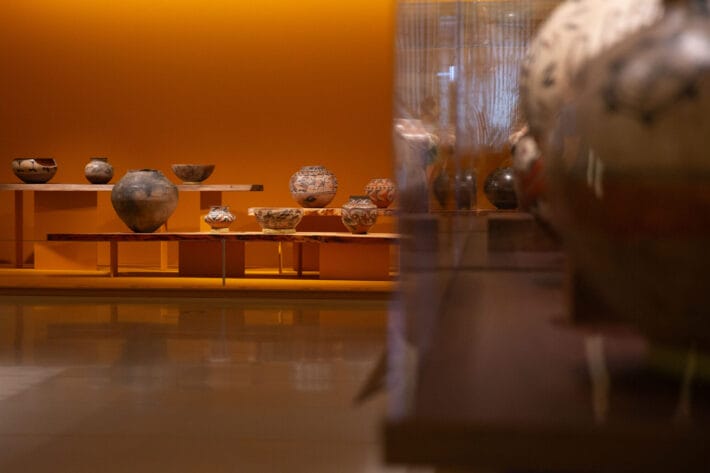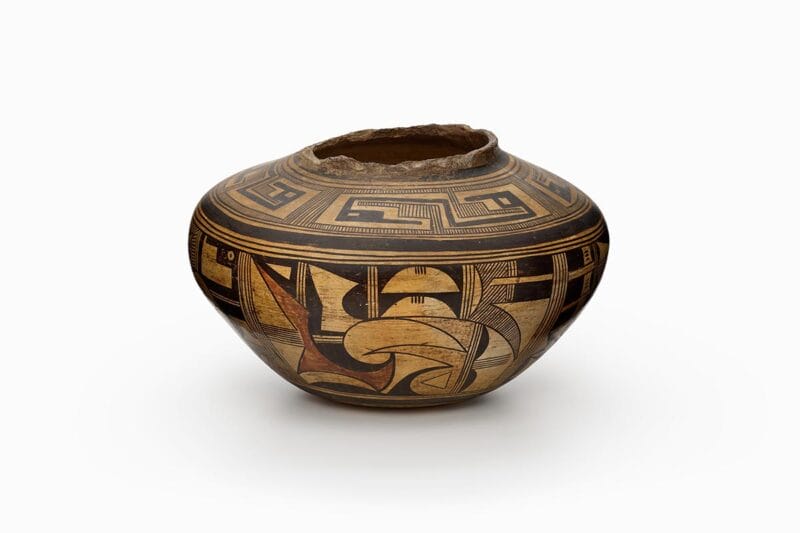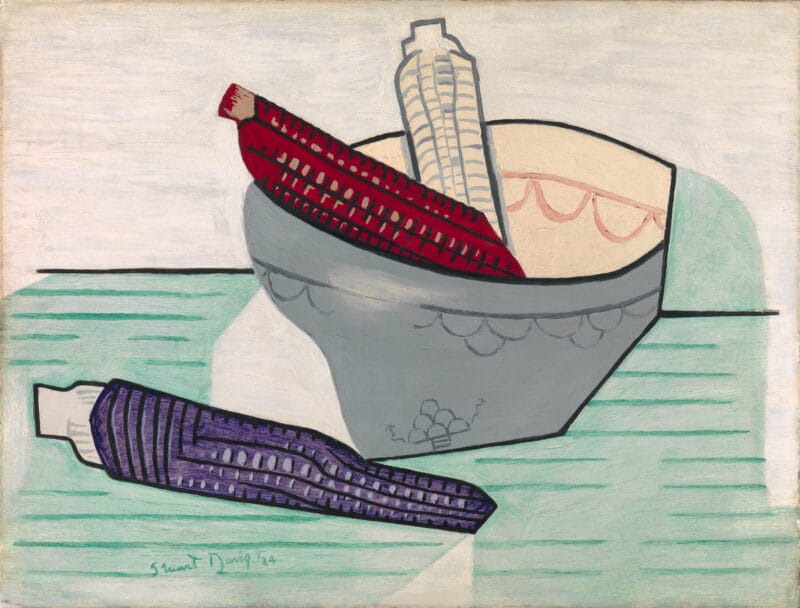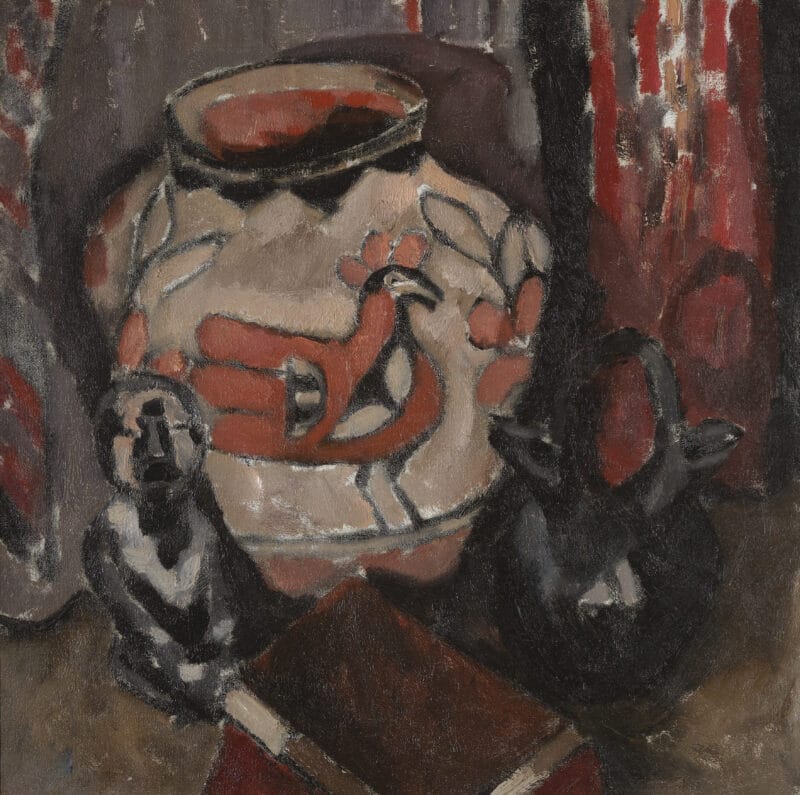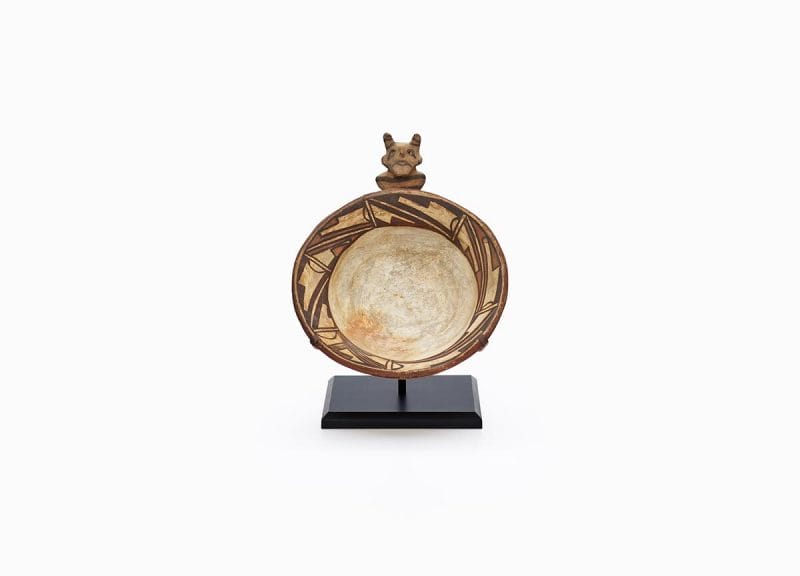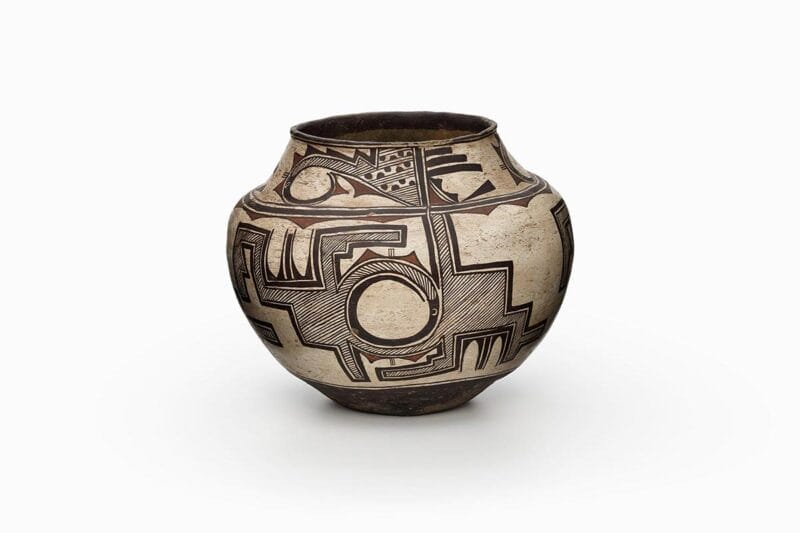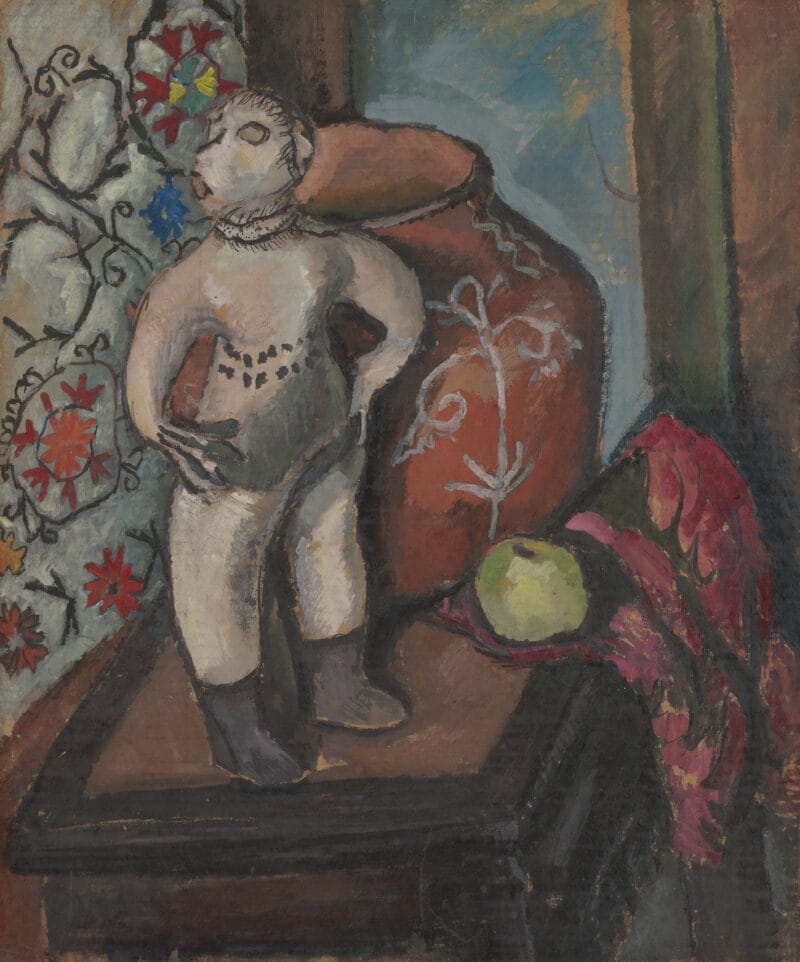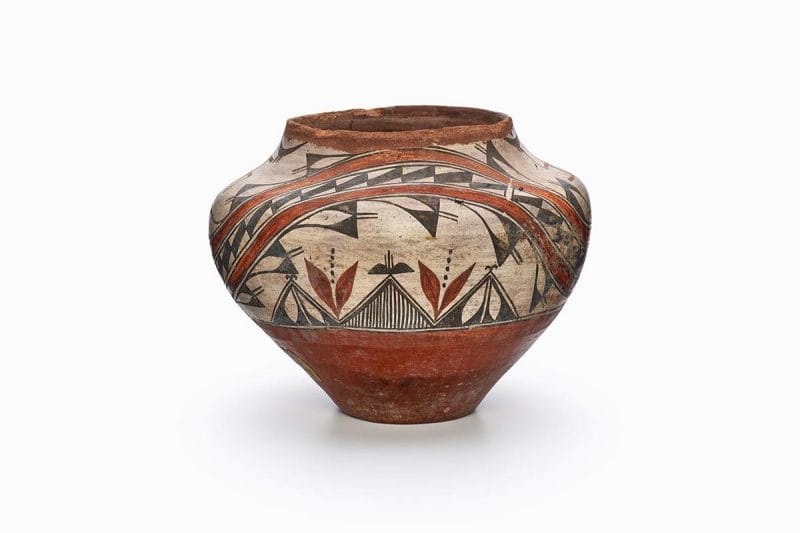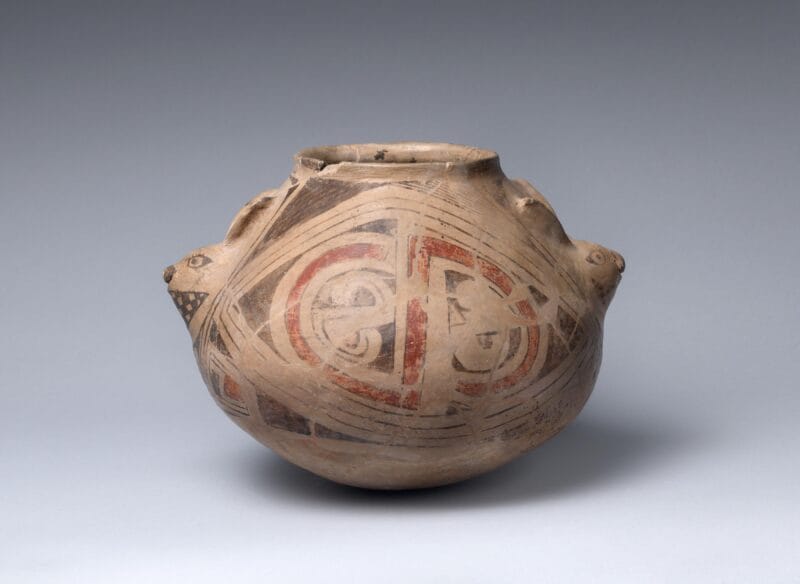
About the Object
The olla-type vessel (cooking pot) seen here is made of buff, or earth-toned, clay and painted with black step, spiral, and triangular designs often found within Casas Grandes iconography. These indicate that the object may have played an important role in ritual ceremonies and may have been venerated as well.
Additional Information
From 900 CE until 1300 CE, the Casas Grandes culture (also referred to as Paquimé or Chihuahua) expanded, eventually influencing the southwestern U.S. states of Arizona and New Mexico and the Mexican states of Chihuahua and Sonora along the eastern shore of the Gulf of California. Works with similar styles would be maintained, adopted, and reinterpreted by later Native American “pueblo” peoples such as the Hopi, who live in what is today Arizona.
[Fine Art of Ancient Lands (now Throckmorton Fine Art), New York, NY];
The Jan T. and Marica Vilcek Collection, 1992-2010;
Gift to The Vilcek Foundation, 2010;
Related Objects
You may also be interested in
“Grounded in Clay” on Display at the Saint Louis Art Museum
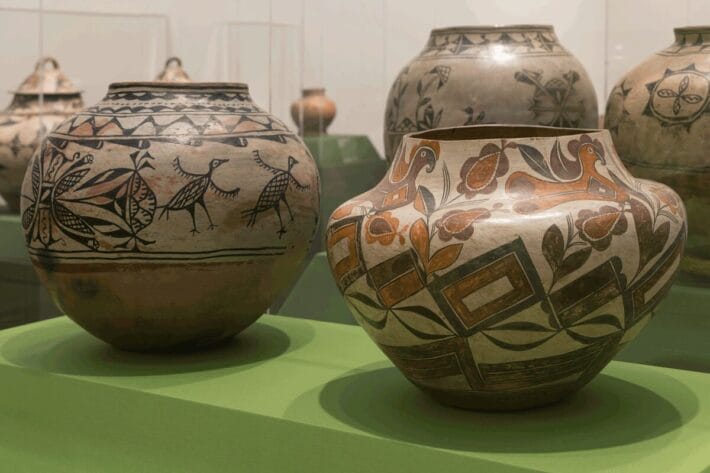
Grounded in Clay: Now on view at the Museum of Fine Arts, Houston
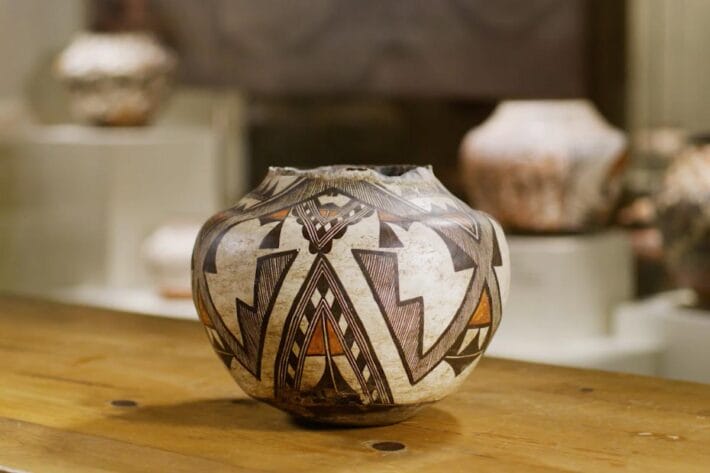
Grounded in Clay: The Spirit of Pueblo Pottery
